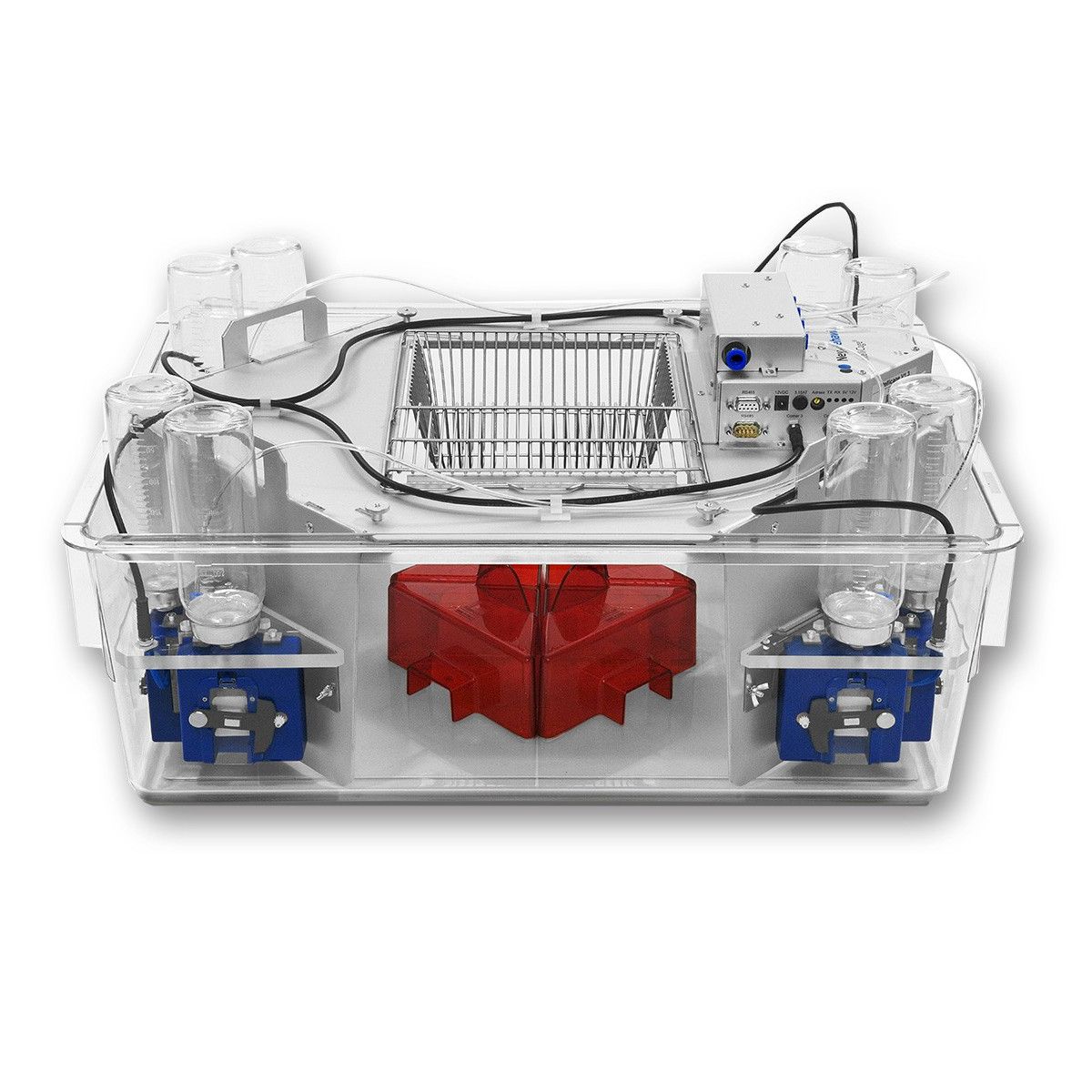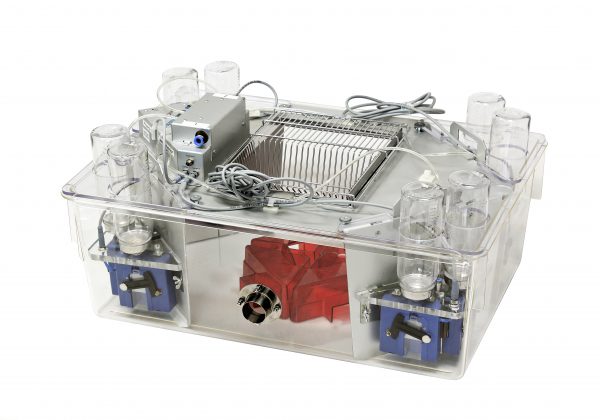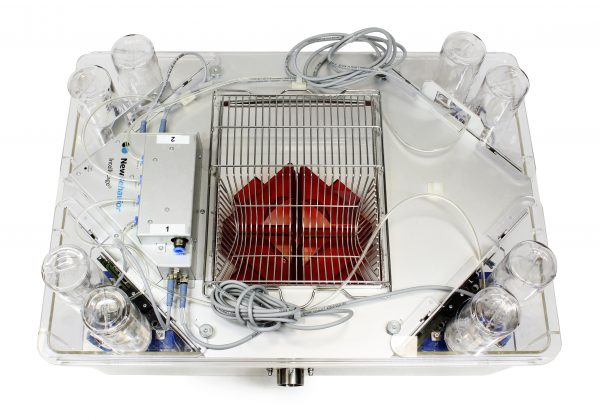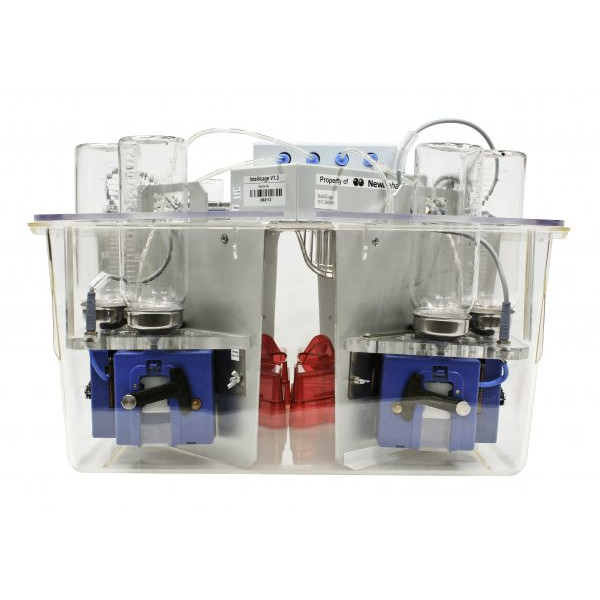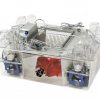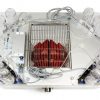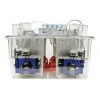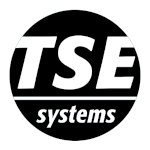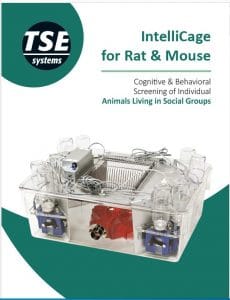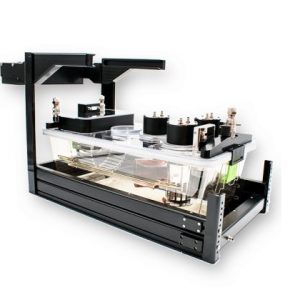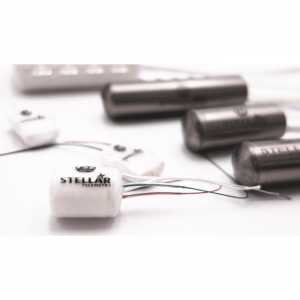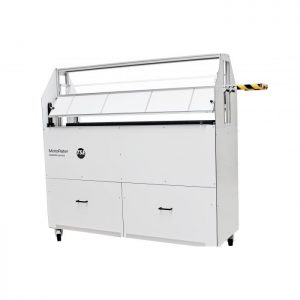IntelliCage
New Standard For Behavioral And Cognitive Phenotyping
Product Enquiry
If you would like to send us an enquiry about this product, please click the button below, fill in the form and submit.
Product EnquiryIntelliCage
New Standard For Behavioral And Cognitive Phenotyping
The IntelliCage, a fully automated system allows you to assess the home cage behavior and cognitive performance of up to 16 individual mice or 8 rats separately while they are living in a social environment. This unique experimental setup fosters natural social behavior in a biologically relevant, enriched but highly standardized home cage context. In this way, the IntelliCage minimizes the need for handling and human intervention, increasing task validity, data reproducibility, and ensuring a high level of animal welfare.
RFID transponder-tagged animals are individually recognized in the fully automated conditioning corners that evaluate spontaneous behavior, operant/associative learning, and memory. The four corners are equipped with sensors (continuous 24h-recording of behavioral events) and actors (allowing the system to feedback on animals’ behavior in a pre-defined way). Together with the software package using a programmable user interface, this unique sensor/actor principle grants direct behavioral shaping of group-housed animals in an all-in-one system according to diverse research interests. The visually designed paradigms run fully automated, allowing for efficient continuous testing and monitoring of large experimental animal cohorts.
To date, IntelliCage data have been published in more than 100 peer-reviewed articles, among them publications in PNAS, Molecular Psychiatry or Nature Communications. The IntelliCage allows a transfer of validated behavioral paradigms into an automated setup, serving as a complement to usual behavioral testing procedures.
Intellicage can be used with several other TSE devices, running wheel, satellite cages, PhenoWorld, connected through Animal gate, which recognizes designated RFID transponder tagged animals to provide access to the respective connected social box.
Features
- Homecage design for long term, 24/7 monitoring
- Group-housing in social context
- Spontaneous behavior
- Operant conditioning
- Learning and memory tasks
- Spatial and temporal behavior
- Discrimination learning
Application
- Cognitive Function
- Operant conditioning
Disease models
- Addiction
- Alzheimer´s
- Anxiety
- Autism
- Depression
- Schizophrenia
Watch this Video:
https://www.jove.com/video/58009/automated-long-term-behavioral-assay-for-cognitive-functions-multiple
Brochure
Selected Publications
Sun L, Verkaik-Schakel RN, Biber K, Plösch T, Serchov T. Antidepressant treatment is associated with epigenetic alterations of Homer1 promoter in a mouse model of chronic depression. J Affect Disord 2021; 279: 501–509.
Kiryk A, Janusz A, Zglinicki B, Turkes E, Knapska E, Konopka W, Lip H-P, Kaczmarek L. IntelliCage as a tool for measuring mouse behavior – 20 years perspective. Behav Brain Res 2020; 388:112620.
Mehr A, Hick M, Ludewig S, Müller M, Herrmann U, von Engelhardt J, Wolfer DP, Korte M, Müller UK. Lack of APP and APLP2 in GABAergic Forebrain Neurons Impairs Synaptic Plasticity and Cognition. Cereb Cortex 2020; 30: 4044–4063.
van Dijk RM, Wiget F, Wolfer DP, Slomianka L, Amrein I. Consistent within-group covariance of septal and temporal hippocampal neurogenesis with behavioral phenotypes for exploration and memory retention across wild and laboratory small rodents. Behav Brain Res 2019; 372: 112034.
Hardt S, Fischer C, Vogel A, Wilken-Schmitz A, Tegeder I. Distal infraorbital nerve injury: A model for persistent facial pain in mice. Pain 2019; 160: 1431–1447.
Selected Product Citations
Reduced exploratory behavior in neuronal nucleoredoxin knockout mice |
|
| Bao NgocBao Ngoc Tran Tran, LucieLucie Valek Valek | Redox Biol | Published 23 Jun 2021 |
| Article Snippet Mice have to make nosepokes (NP) to open the doors for water access.. The IntelliCage is controlled by a computer with IntelliCage Plus software, which executes pre-programmed experimental tasks and schedules.. The numbers and duration of corner visits, nosepokes, and licks are automatically recorded without the need for handling of the mice during the recording times. |
|
 |
|
| Figure Legend IntelliCage behavior of Nestin-NXN -/- versus NXN-flfl mice averaged over different tasks To compare behavior across modules/tasks the 12h cycle averages for each mouse per period were pooled and were plotted as half violin plots that show the Gauss distribution. The box within the violin is the interquartile range, the median is the dot. The lines connect the mean and the quartiles. The left scatters show individual results, each mouse is represented by eight dots for each of the eight modules/tasks. The data were compared per 2-tailed, unpaired Student’s t-test for each parameter. The parameters are explained in Suppl. Table 7 . Asterisks show statistically significant differences between genotype. *P |
|
Social Housing Leads to Increased Ethanol Intake in Male Mice Housed in Environmentally Enriched Cages |
|
| Hannah D. Fulenwider, Meridith T. Robins | Front Behav Neurosci | Published 18 Jun 2021 |
| Article Snippet Additional studies have used video-tracking/scoring, allowing for the analysis of time spent at the ethanol bottle for each animal (Logue et al., ).. Further, more sophisticated studies began to employ radiofrequency tracking in conjunction with Intellicage systems (TSE Systems), which record the total number of approaches, nose-pokes, and licks at ethanol the ethanol spout for individual animals within a social setting (Radwanska and Kaczmarek, ).. However, potential spillage in these approaches is not possible to account for, and the fact that ethanol access requires subjects to complete an operant behavior suggests that these studies are more akin to those assessing operant ethanol self-administration rather than voluntary.. |
|
The IntelliCage System: A Review of Its Utility as a Novel Behavioral Platform for a Rodent Model of Substance Use Disorder |
|
| Ismail Nurul Iman, Nurul Aiman Mohd Yusof | Front Behav Neurosci | Published 4 Jun 2021 |
| Article Snippet This study also provided evidence that the IntelliCage system is more sensitive in the detection of behavioral alterations and learning paradigms in comparison to the Morris water maze, rotarod test, and forced swimming test ( ).. The absence of mice social deprivation and any human interference with the IntelliCage system use may be the contributing factor to the sensitivity of the assessment.. More complex learning and memory protocols, including goal-directed behaviors , serial reversal task ( ; ), chaining, and patrolling , have also been successfully designed and employed using the IntelliCage system. |
|
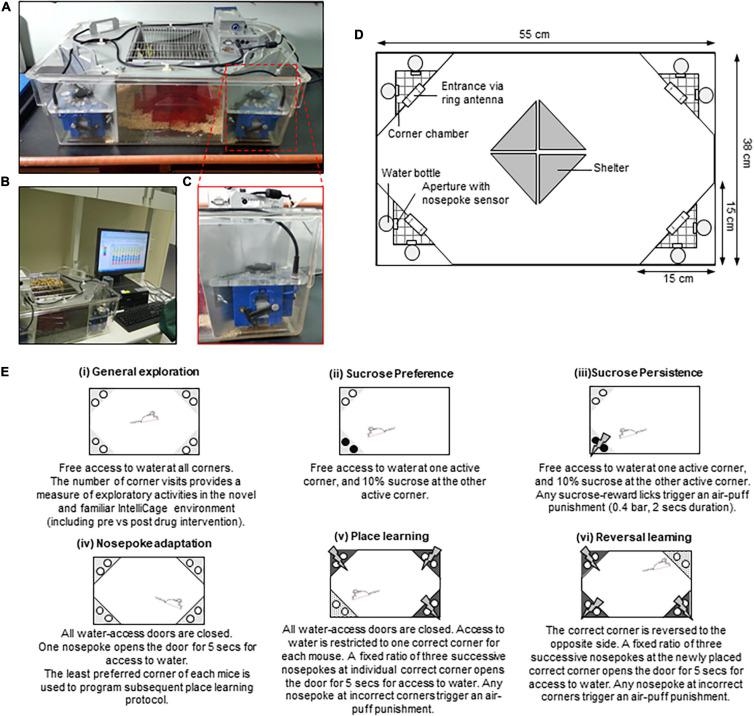 |
|
| Figure Legend An overview of the IntelliCage system. (A) The IntelliCage apparatus. (B) The IntelliCage apparatus is connected to a computer-based software used to design various behavioral protocols, as well as to measure and analyze mice behavioral patterns. (C) The motorized doors at each IntelliCage corner chamber which control access to water bottle nipples. (D) Schematic illustration of the IntelliCage. (E) Summary of IntelliCage parameters modified from Iman et al. (2017) . |
|

